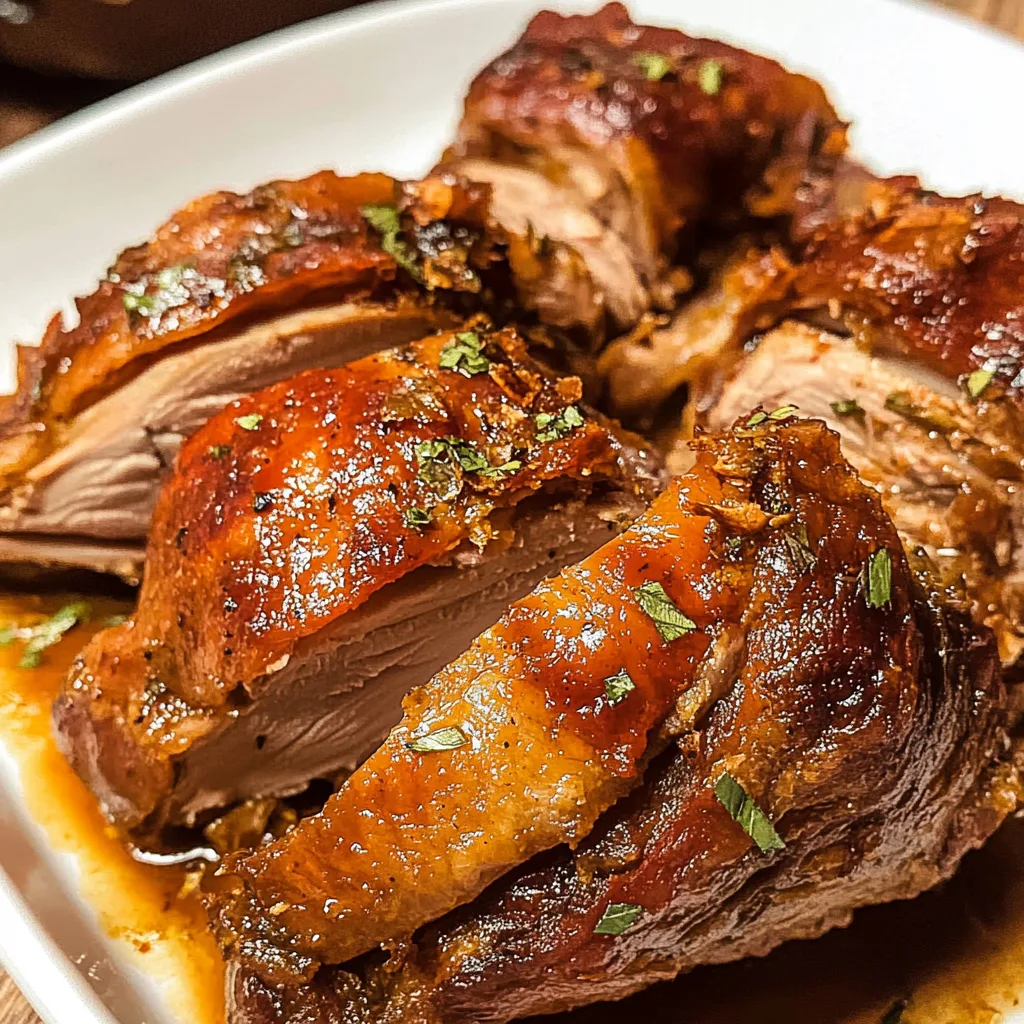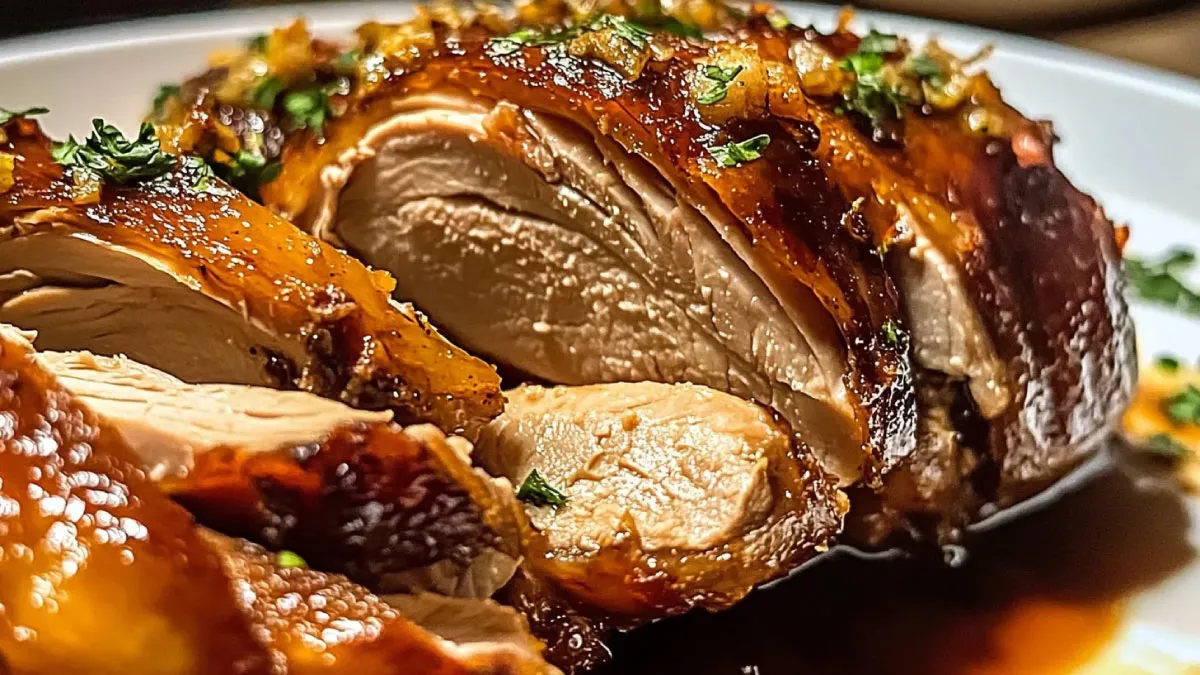The Ultimate Turkey Neck Recipe Guide: Delicious, Easy, and Nutritious
Turkey necks are a flavorful, versatile ingredient that can be prepared in numerous ways. Whether you are cooking for a holiday meal or preparing a quick weeknight dinner, turkey necks offer a rich, savory taste that pairs well with many dishes. This guide will explore everything you need to know about turkey neck recipes—from their nutritional benefits to various preparation methods.
Table of Contents
What Are Turkey Neck?
Turkey necks are the long, meaty section located at the top of the bird, just below the head. These cuts are often overlooked but have a rich flavor and tender texture when cooked correctly. Turkey necks are usually sold fresh or frozen, and they can be found in most grocery stores or specialty markets. This cut is ideal for making flavorful broths, soups, and stews.
When prepared properly, turkey necks can be transformed into a mouthwatering dish that is both satisfying and budget-friendly. Despite their relatively low cost, turkey necks offer a wealth of culinary possibilities, making them a great addition to your cooking repertoire.
Learn more by exploring our comprehensive guide on The Best Turkey Neck Recipe
How to Choose the Best Turkey Neck?
Selecting the best turkey necks is key to achieving the best flavor and texture in your dish. When choosing turkey necks, there are a few things to consider. First, look for fresh turkey necks if possible, as they tend to have a better flavor and texture than frozen ones. If you must buy frozen, ensure that the necks are well-packaged to avoid freezer burn.
Check the color of the turkey necks. They should be a light pink to pale color. Darker spots or an off-putting odor could indicate that the meat is not fresh. Additionally, choose turkey necks that are free of excessive fat. A moderate amount of fat is fine for flavor, but you don’t want too much, as it could overwhelm your dish.

Ingredients
- 2 lbs turkey necks
- 1 medium onion, chopped
- 2 cloves garlic, minced
- 1 cup chicken broth
- 1 cup water
- 3 tbsp all-purpose flour
- 2 tbsp vegetable oil
- 1 tsp paprika
- 1 tsp garlic powder
- 1 tsp onion powder
- 1 tsp dried thyme
- Salt and black pepper to taste
Tips for Buying Best Turkey Neck
To ensure you are buying the freshest turkey necks, visit a local butcher or a reputable grocery store known for quality meat. Look for necks that are firm to the touch, without any signs of discoloration or unpleasant smells. If buying from a butcher, don’t hesitate to ask about the source of the turkey necks.
If fresh turkey necks are not available, consider buying frozen turkey necks. Always check the packaging for signs of damage or freezer burn. A good rule of thumb is to ensure that the necks are tightly wrapped and have a clean, crisp appearance when thawed.
How to Store Best Turkey Neck Turkey Neck Safely
Proper storage is crucial to maintaining the quality and safety of your turkey necks. If you plan to use them within a couple of days, store fresh turkey necks in the refrigerator in an airtight container or tightly wrapped in plastic wrap. Turkey necks should be used within 1–2 days for the best quality.
For longer storage, freeze turkey necks. Place them in a freezer-safe bag or container, and make sure they are tightly sealed to prevent air from entering. When frozen, turkey necks can last for up to 6 months, but for the best flavor, it’s ideal to use them within 3 months.
Step-by-Step Preparing
Preparing turkey necks is an easy and straightforward process. Follow these steps to ensure your turkey necks are cleaned and prepped for cooking:
- Defrost (if frozen): Allow frozen turkey necks to thaw in the refrigerator for 24 hours before use.
- Clean: Rinse the turkey necks under cold water to remove any excess blood or debris. Pat them dry with paper towels.
- Trim: Use a sharp knife to remove any excess fat or skin from the necks.
- Season: Season the turkey necks with your choice of spices, herbs, and marinades.
Now your turkey necks are ready to be cooked using your preferred method.
Essential Kitchen Tools
To cook turkey necks to perfection, you’ll need a few essential kitchen tools. These include:
- Large pot or Dutch oven: Perfect for braising or slow-cooking turkey necks.
- Sharp knife: For trimming and preparing the necks.
- Basting brush: Ideal for applying marinades and sauces.
- Slow cooker or pressure cooker: Excellent for hands-off cooking.
Having these tools on hand will ensure that your turkey necks are cooked evenly and tenderly, without any hassle.
Expert Tips to Best Turkey Neck
Turkey necks are a versatile and flavorful ingredient that can be transformed into a variety of delicious dishes. Whether you’re new to cooking turkey necks or have been preparing them for years, following expert tips will help you elevate your recipes. These tips focus on achieving tender, flavorful turkey necks that will impress your guests every time. From seasoning to cooking techniques, mastering these aspects will ensure your turkey neck recipe is a success.
Cooking Times and Techniques
Cooking turkey necks to perfection requires the right technique and cooking time. The most common methods for cooking turkey necks are braising, slow cooking, or roasting. For tender, fall-off-the-bone turkey necks, braising is a great option. Begin by browning the necks in a hot pan, then simmer them on low heat for several hours, either in a pot or slow cooker.
Another popular technique is slow cooking, which allows the turkey necks to cook gently over time. This method is ideal for creating rich, flavorful broths or soups. If you prefer to roast the necks, season them well and cook at a moderate temperature, turning occasionally until they develop a crispy, golden exterior while staying moist on the inside.
Pairing with Side Dishes
Turkey necks can be paired with a wide variety of side dishes, depending on your preferences and the style of recipe you’re making. For a traditional Southern meal, serve turkey necks with comforting sides like collard greens, cornbread, and mashed potatoes. These sides complement the rich, savory flavor of the turkey necks and create a well-rounded meal.
For a lighter, healthier meal, try pairing turkey necks with steamed vegetables such as broccoli, carrots, and green beans. These sides add a burst of color and nutrition, balancing the richness of the turkey necks. Additionally, you can serve turkey necks with a fresh salad or quinoa for a more modern, protein-packed dish.
Ideal Side Dishes for Best Turkey Neck
When serving turkey necks, consider side dishes that will enhance the overall flavor of the meal while providing balance. Some great options include:
- Rice: Whether you prefer white, brown, or wild rice, this is a staple side dish that pairs well with turkey necks, helping to soak up the flavorful juices from the meat.
- Mashed potatoes: The creamy texture of mashed potatoes makes them a perfect complement to tender turkey necks.
- Cornbread: A Southern classic, cornbread is a great choice to accompany turkey necks, adding a bit of sweetness to balance the savory flavors.
- Collard greens: For a truly Southern-inspired meal, collard greens provide a fresh, slightly bitter contrast that works well with Best Turkey Neck.
These side dishes not only complement the flavors of the Best Turkey Neck but also create a balanced meal that is both hearty and satisfying.
FAQs About Best Turkey Neck
Are Turkey Neck Healthy?
Yes, turkey necks are a healthy option for those looking to add lean protein to their diet. They are low in fat, especially when compared to other cuts of meat, and are a good source of iron, zinc, and B-vitamins. Turkey necks also contain collagen, which is beneficial for joint and skin health. However, like any meat, it’s important to consume them in moderation as part of a balanced diet.
Can I Freeze Cooked Turkey Neck?
Absolutely. If you have leftover cooked turkey necks, they can be stored in the freezer for later use. Simply let the turkey necks cool completely, then wrap them tightly in plastic wrap or store them in an airtight container. Cooked turkey necks can be kept in the freezer for up to 3 months. To reheat, simply thaw them in the refrigerator overnight and warm them up on the stove or in the oven.
How Long Does It Take to Cook Best Turkey Neck?
The cooking time for turkey necks depends on the method you’re using. When braising or slow cooking, turkey necks typically need 2–4 hours on low heat to become tender. If you’re roasting the necks, they will need about 1–1.5 hours in the oven at 350°F (175°C). For a quick method, using a pressure cooker or instant pot can reduce cooking time to around 45 minutes.
Can Turkey Neck Be Used in Broth or Stock?
Yes, turkey necks are an excellent base for making broth or stock. Their bones and meat add a deep, rich flavor to the liquid, which is perfect for soups, stews, or sauces. To make turkey neck broth, simmer the necks in water with vegetables, herbs, and spices for several hours. The result will be a flavorful and nutrient-packed broth.
What Other Recipes Can I Try with Best Turkey Neck?
In addition to classic braised turkey necks and soups, there are several other ways to incorporate turkey necks into your meals. Try making turkey neck gumbo, stews, or stir-fries. You can also use the meat in tacos, wraps, or sandwiches for a creative spin on traditional recipes. The possibilities are endless when it comes to turkey neck recipes.
Where Can I Find Best Turkey Neck?
Turkey necks can typically be found at most grocery stores, especially during the Thanksgiving and holiday seasons. They are often sold in the poultry section, either fresh or frozen. If you cannot find them in your local supermarket, consider visiting a local butcher, farmers’ market, or specialty store. Some online retailers also offer fresh or frozen turkey necks for delivery.
By following these expert tips and answering common questions, you can take your turkey neck recipe to the next level. Whether you’re making a comforting Southern dish, a hearty soup, or experimenting with new ideas, turkey necks are a delicious and affordable ingredient that can elevate your meals.

1 thought on “The Ultimate Turkey Neck Recipe Guide: Delicious, Easy, and Nutritious”
Comments are closed.